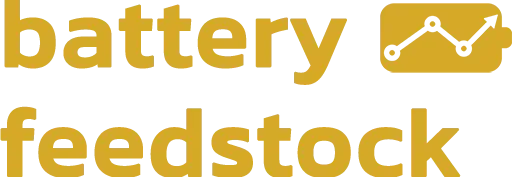Europe and the US race to localize lithium: offtakes, feasibility, and the near-term price path
Europe clinched a top-tier lithium offtake (Vulcan–Glencore), the US moved a DLE flagship toward FID (Smackover SWA), and AMG–Easpring aligned on EU hydroxide supply. At the same time, Chinese spot carbonate stabilized with tighter ore and firm downstream demand. We dissect how these deals and price signals reshape Western cost curves and customer optionality, and we lay out a 1–6 month outlook: neutral-to-firm on carbonate/hydroxide with brief squeezes possible as destocking runs into steady battery demand.
Why this matters now
Three developments in the past week strengthen the case that Western lithium supply chains are moving from slides to steel:
Bankable offtake in Europe: Vulcan Energy signed an eight-year lithium hydroxide monohydrate supply deal with Glencore for 36,000–44,000 mt total, ~20% of Vulcan’s planned first-phase output—completing offtake for Phase 1 financing.
US DLE flagship nears decisions: Smackover Lithium submitted the final feasibility study for the South West Arkansas (SWA) project: 22,500 mt/y battery-grade LCE, $1.45 bn initial capex, 20.2% pre-tax IRR, with FID targeted for 2026 and first production in 2028.
EU hydroxide alignment: AMG Lithium and Beijing Easpring signed an MoU to underpin European lithium hydroxide supply from Bitterfeld-Wolfen (Germany) into Easpring’s Kotka (Finland) CAM plant—tying refiners to cathode demand locally.
These come as Argentina’s mining exports hit $4.21 bn (+32.9% YoY) with seven lithium projects operating—adding medium-term LCE availability from South America and diversifying offtake risk.
Price pulse: stabilization with pockets of tightness
China battery-grade carbonate is stabilizing after a downshift in the price center: 73,064 yuan/mt on Oct. 16, with spot hovering near 72,400–73,600 yuan/mt and futures rangebound.
Near-term balance looks tighter than headlines suggest:
Lithium ore: suppliers are reluctant sellers after inventory drawdowns; spot ore remains tight with higher inquiry and deal activity.
Carbonate output: new brine/spodumene lines are coming on, but EV + ESS demand is strong enough to push destocking in October; a temporary supply tightness could lift prices.
Seaborne markers corroborate firmness: DDP carbonate at ~72,500–72,800 yuan/mt in mid-October, reflecting the Q3 rebound from Jiangxi disruptions and year-end battery restocking.
Takeaway: short-run tightness is consistent with this week’s Western contracting momentum: off-take and feasibility progress typically arrive when buyers see floor-like conditions.
Europe’s localization flywheel
The Vulcan–Glencore deal matters for three reasons:
Bankability: A diversified offtake set (autos, cathode, battery, and trading) de-risks Phase 1 project finance—critical as EU debt costs remain above pre-2022 levels.
Regional optionality: Tying production to European counterparties reduces FX/logistics risk and aligns with OEM CO₂ targets and IRA/EU CBAM-style policy trajectories.
Scale signal: Vulcan emphasizes Lionheart as Europe’s largest resource—positioning the EU to anchor hydroxide offtake domestically rather than chase spot in China.
AMG–Easpring complements this: a refiner–CAM bridge across Germany–Finland shortens the physical loop, keeps qualification onshore, and creates a pathway for recycled feed integration—all key to lowering Scope 3 for European cells.
The US onshoring picture: from finance to brine
The SWA feasibility reads like a template for DLE-based US brine projects: decent brine grade (startup ~549 mg/L), competitive cash cost ~$4,516/mt, and realistic capex with contingency. Timing (FID 2026; first LCE 2028) aligns with US cathode projects that survive the current grant rollback.
Meanwhile, private capital is filling gaps: JPMorgan launched a $1.5 tn “Security and Resilience” initiative over 10 years with critical minerals as a core thrust—explicitly targeting mining/refining and other industrial choke points as federal midstream grants are pared back.
What these deals change in the cost curve
Contract coverage lowers offtake risk premia for debt providers, improving the weighted average cost of capital (WACC) for EU/US projects. The Glencore anchor particularly enhances working capital flexibility and resale optionality for hydroxide.
DLE timeline realism: SWA’s feasibility cadence (FID 2026/first output 2028) tempers expectations of overnight US lithium independence but validates bankable DLE at commercial scale.
Feedstock availability: With Argentina’s export growth track, Western buyers can diversify brine/concentrate exposure, moderating delivered cost volatility into Europe and North America.
Risks to watch
Policy whiplash: US grant cancellations in the midstream risk stranding parts of the value chain and slowing customer qualification for new Western hydroxide/carbonate.
China market gravity: Stabilizing lithium prices and tight ore keep Asia-based supply attractive; any renewed Jiangxi disruptions or futures spikes could lift global contract floors.
Execution risk: DLE scale-up, EU permitting, and capex inflation remain the gating items for 2027–2029 Western volume.
Outlook
Price sentiment: Neutral → mildly bullish. Tight ore, steady EV/ESS drawdowns, and year-end qualification runs argue for firm to slightly higher carbonate/hydroxide into Q4–Q1, punctuated by squeezes if restocking front-loads.
Projects and offtake: Expect more EU tie-ups (refiner ↔ CAM ↔ OEM) and US DLE pre-FID engineering milestones as financing lanes broaden beyond federal grants.
Regional arbitrage: Delivered hydroxide premia into Europe should hold a premium to China DDP given logistics and energy inputs; US premia hinge on how quickly onshoring customers de-risk qualification.
